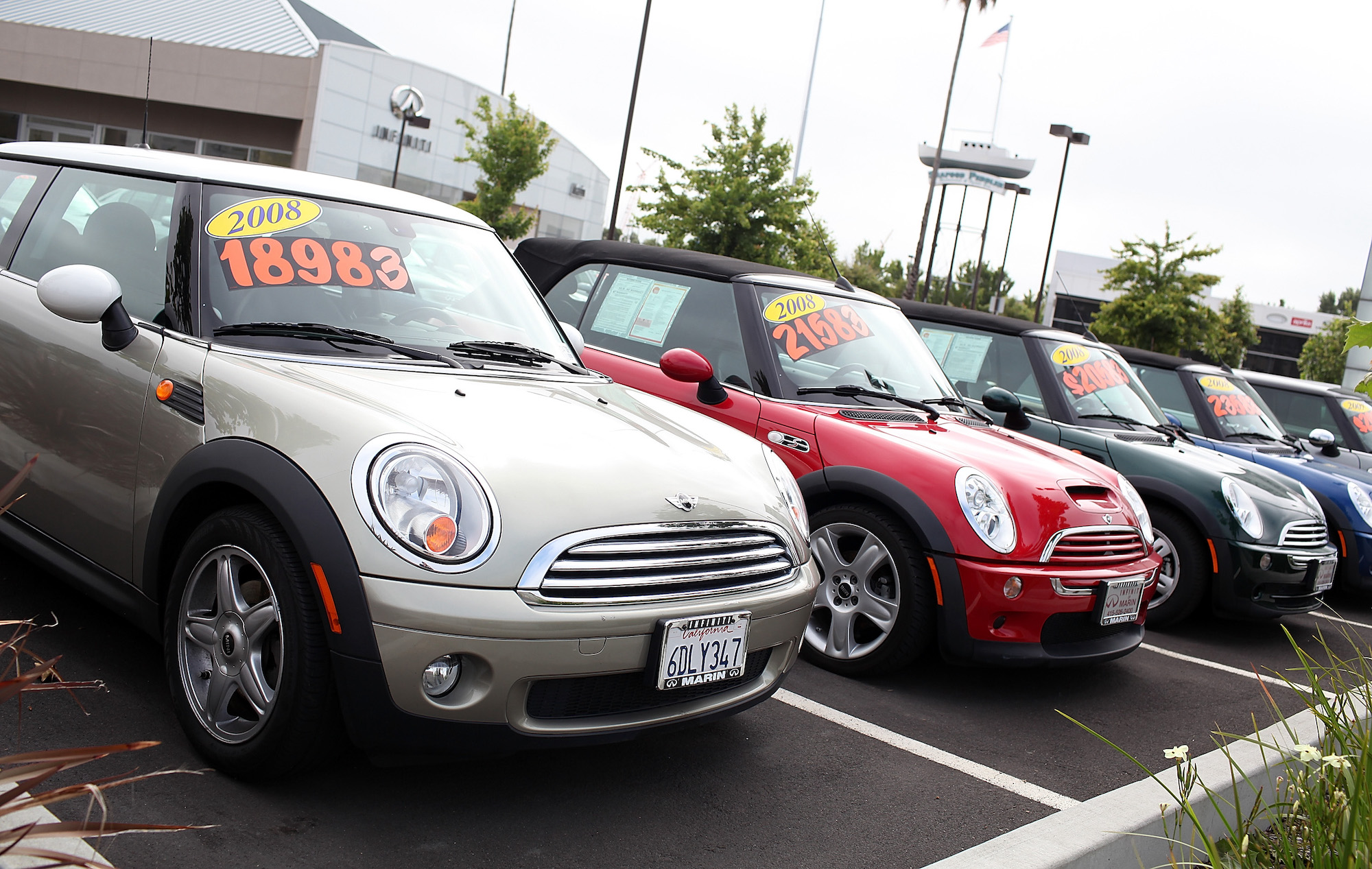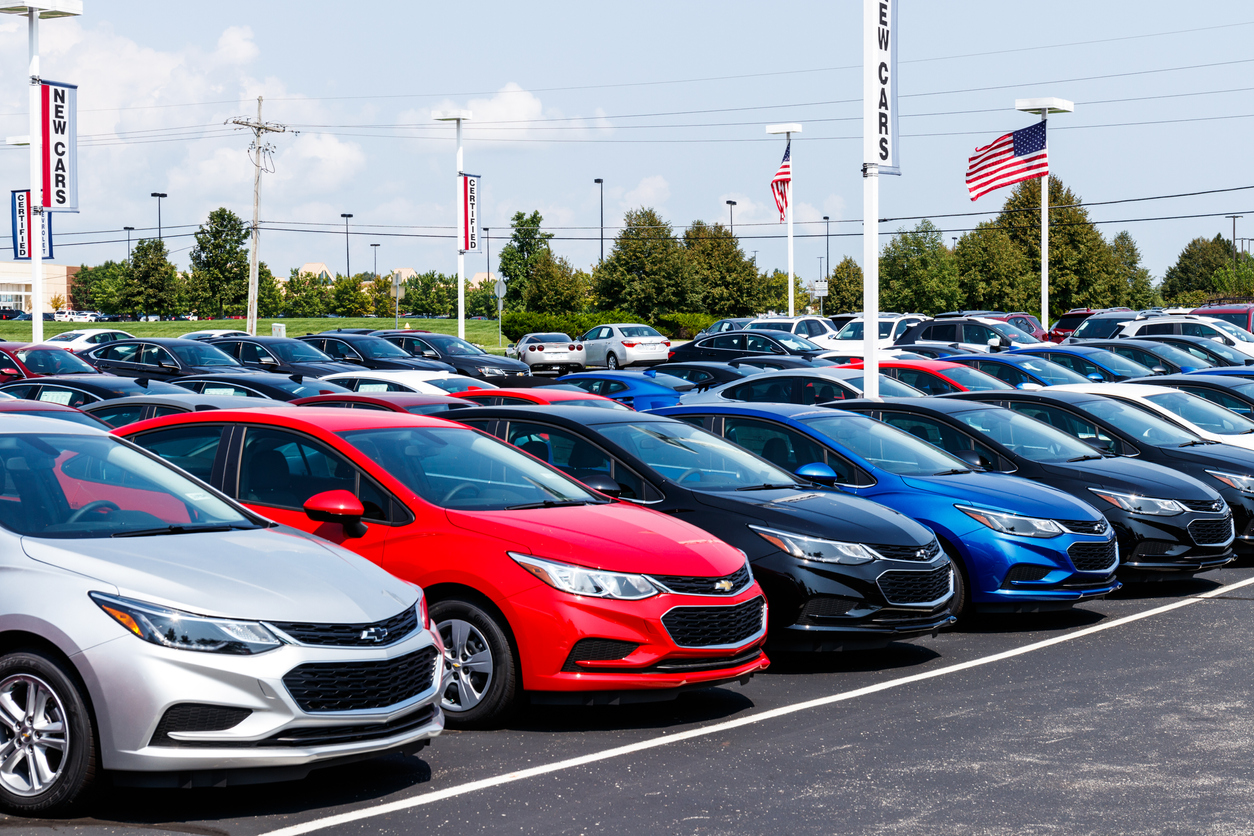Used Semi Trucks For Sale Under $30,000 Near Me: Your Comprehensive Guide to Affordable Trucking pickup.truckstrend.com
The open road beckons, and for many aspiring owner-operators or small fleet owners, the dream of hauling freight often begins with a critical question: how to acquire the necessary equipment without breaking the bank. The idea of finding a reliable used semi truck for under $30,000 might seem like a daunting challenge, or even an impossibility, in today’s market. However, with the right knowledge, strategic approach, and a healthy dose of patience, it is indeed a viable pathway into the trucking industry or an economical way to expand an existing operation.
This comprehensive guide is designed to demystify the process of finding and purchasing a used semi truck in this budget range. We will explore the realities of this price point, what to expect, critical inspection points, where to search, and essential tips to ensure your investment, while modest, is a smart one. Our goal is to equip you with the insights needed to navigate the market confidently and make an informed decision that drives your success.
Used Semi Trucks For Sale Under $30,000 Near Me: Your Comprehensive Guide to Affordable Trucking
Why Consider a Used Semi Truck Under $30,000?
The primary allure of a semi truck priced below $30,000 is, undoubtedly, the significant cost savings. In an industry where new trucks can easily exceed $150,000, and even late-model used trucks hover around $60,000-$100,000, a sub-$30,000 option presents a powerful advantage for specific buyers:
- Lower Initial Investment: This makes trucking accessible to individuals with limited capital, enabling new owner-operators to enter the market without substantial debt. For existing businesses, it allows for fleet expansion without tying up large sums of capital.
- Reduced Depreciation: The steepest depreciation hit on a semi truck occurs in its first few years. By the time a truck’s value drops below $30,000, it has likely absorbed most of its depreciation, meaning your investment holds its value better percentage-wise over time.
- Simpler Technology, Easier Maintenance: Older trucks, often found in this price range, typically feature less complex electronic systems and more mechanical components. This can translate to simpler diagnostics, potentially lower repair costs if you or your mechanic are familiar with older engines, and greater DIY potential for minor issues.
- Faster Return on Investment (ROI): With a lower purchase price, you can reach your break-even point much quicker, allowing profits to accumulate sooner. This accelerated ROI can be a game-changer for a budding trucking venture.
- Proving Ground: For those unsure about committing to a full-time trucking career or a specific niche, an affordable used truck serves as an excellent proving ground. It allows you to gain experience, understand the demands, and build a customer base without the pressure of a massive truck payment.

What to Expect: Understanding the $30,000 Price Point
Setting realistic expectations is paramount when searching for a semi truck under $30,000. You won’t be buying a showroom-ready, low-mileage machine, but rather a workhorse that has already seen considerable service.

- Age and Mileage: Trucks in this price range are typically older models, often 10-15 years old or more. Mileage will likely be high, commonly ranging from 700,000 to over 1 million miles. While these numbers might seem daunting, well-maintained heavy-duty diesel engines are designed to last well beyond a million miles.
- Condition – Cosmetic and Mechanical: Expect cosmetic wear and tear. Dents, scratches, faded paint, and interior wear are common. Mechanically, the truck might be operational but could require immediate maintenance or minor repairs to get it road-ready and DOT compliant. It’s rare to find one needing absolutely nothing.
- Engine and Transmission Types: You’ll frequently encounter older, proven engine models like the Detroit Diesel Series 60, Cummins N14, Cat 3406E, or older Volvo D12/Mack E7 engines. These are known for their reliability and simplicity. Manual transmissions (10-speed, 13-speed, 18-speed) are prevalent, offering robust performance and fewer complex electronics than modern automatics.
- Features and Amenities: Don’t expect a lot of creature comforts or advanced technologies. Cabs will be more basic, sleepers might be smaller (e.g., 48-inch or 60-inch flat tops), and advanced safety features (like lane departure warning, adaptive cruise control) will be absent. Air conditioning, power windows, and a decent stereo are usually present, but their condition will vary.
- "As-Is" Sales: Almost all trucks in this price bracket will be sold "as-is," meaning there’s no warranty from the seller. This underscores the critical need for a thorough pre-purchase inspection.

Key Factors to Inspect Before Buying
This is arguably the most crucial section. A detailed inspection can save you tens of thousands in post-purchase repairs. Always arrange for a professional, independent pre-purchase inspection (PPI) by a qualified heavy-duty mechanic, even if it costs a few hundred dollars. It’s money well spent.
-
Engine:
- Leaks: Look for oil, coolant, or fuel leaks around the engine block, oil pan, and turbocharger.
- Smoke: Start the engine cold. White smoke (coolant), blue smoke (oil), or black smoke (fuel/turbo issue) are red flags.
- Noises: Listen for unusual knocking, ticking, or grinding sounds.
- Oil Pressure: Check the gauge once warmed up. It should hold steady.
- Service Records: Request detailed maintenance history. Oil changes, filter replacements, and major overhauls (in-frame or out-of-frame) are vital.
- Blow-by: Remove the oil fill cap while the engine is running. Excessive pressure/smoke coming out (blow-by) can indicate worn piston rings.
-
Transmission & Drivetrain:
- Shifting: Test drive to ensure smooth gear changes, no grinding, and proper engagement of all gears.
- Clutch: Check for slippage or chattering.
- Differentials: Inspect for leaks and listen for unusual noises during the test drive.
-
Brakes:
- Air System: Listen for air leaks. Check air pressure buildup and retention.
- Components: Inspect brake drums/rotors for excessive wear, brake shoes/pads for thickness, and air lines for cracks.
- DOT Inspection Readiness: Ensure all brake components appear to be in good working order for a DOT inspection.
-
Tires:
- Tread Depth: Check all tires for adequate tread. New tires are extremely expensive (thousands per set).
- Even Wear: Uneven wear can indicate alignment issues or suspension problems.
- Age: Check the DOT date code on the sidewall (e.g., 3220 means 32nd week of 2020). Tires older than 5-7 years, even with good tread, may be prone to failure.
-
Frame & Suspension:
- Cracks/Welds: Inspect the frame rails for cracks, especially around stress points like fifth wheel mounts, suspension hangers, and crossmembers.
- Rust: Surface rust is common, but deep, structural rust is a serious issue.
- Air Bags: Check for cracks, leaks, or dry rot.
- Bushings & Pins: Look for excessive wear in suspension bushings and kingpins.
-
Electrical System:
- Lights: Test all exterior and interior lights.
- Gauges: Ensure all dashboard gauges (oil pressure, temperature, voltage, air pressure) are functional and accurate.
- Batteries: Check battery terminals for corrosion and test battery health.
-
Cab & Interior:
- Leaks: Look for water stains on the headliner or floor, indicating leaks from the roof or windshield.
- Functionality: Test HVAC, power windows, wipers, and other accessories.
- Sleeper: Inspect the mattress, storage, and any auxiliary power units (APUs) if present.
-
Paperwork:
- Ensure the title is clear, matches the VIN, and is in the seller’s name.
- Maintenance Records: Critical for understanding the truck’s history.
- DOT Inspection Reports: Review previous inspection results.
Where to Find Used Semi Trucks Under $30,000 Near You
Finding these budget-friendly trucks requires casting a wide net and knowing where to look.
-
Online Marketplaces:
- TruckPaper.com, CommercialTruckTrader.com, MyLittleSalesman.com: These are the largest dedicated commercial truck listing sites. Use their advanced search filters to narrow down by price, year, and location.
- Craigslist & Facebook Marketplace: While you need to be more cautious due to a higher prevalence of scams, legitimate deals from private sellers can be found. Always meet in a public place, and never commit without seeing the truck in person.
- eBay Motors: Some larger sellers and dealers list trucks here.
-
Auction Houses:
- Ritchie Bros., IronPlanet, GovPlanet: These are major industrial auctioneers that frequently have semi trucks. Prices can be excellent, but buying at auction is high-risk as "as-is" truly means "as-is," with minimal opportunity for detailed inspection before bidding. Attend preview days if possible.
- Local Auto/Heavy Equipment Auctions: Check for smaller, regional auctions.
-
Dealerships (Used Sections):
- While new truck dealerships focus on newer models, many have a used truck department that takes trade-ins. They might have older trucks that fit your budget, often having undergone a basic inspection.
-
Private Sellers / Owner-Operators:
- Look for "for sale" signs on trucks at truck stops, service centers, or online forums. Buying directly from an owner-operator can sometimes yield a better deal, as they avoid dealer markups, and you can potentially get a more honest history of the truck.
-
Fleet Sales:
- Larger trucking companies periodically upgrade their fleets and sell off older units. Keep an eye on their websites or contact their sales departments directly. These trucks often have consistent maintenance records.
-
Networking:
- Talk to other truckers, mechanics, and freight brokers. Word-of-mouth within the trucking community can lead to hidden gems.
The Buying Process and Important Considerations
Once you’ve found a potential candidate, the next steps are crucial.
-
Budgeting Beyond Purchase Price: The $30,000 is just the starting point. You must budget for:
- Immediate Repairs/Maintenance: Assume you’ll need at least $2,000 – $5,000 for filters, fluids, tires, and minor repairs to get it DOT-ready.
- Taxes and Registration: Varies by state, but can be significant.
- Insurance: Get quotes before buying. Commercial truck insurance is expensive.
- Tools: Basic tools for minor roadside repairs.
- Operating Capital: Funds for fuel, tolls, and unexpected expenses.
-
Financing: Securing traditional financing for a truck under $30,000, especially older models, can be challenging. Lenders often have age and mileage restrictions. You may need to pay cash, secure a personal loan, or explore non-traditional financing options.
-
DOT Compliance: Your truck must pass a Department of Transportation (DOT) inspection to operate legally. Ensure it meets all safety standards. Factor in any necessary repairs to meet these standards.
-
Negotiation: Always negotiate the price. Research comparable sales to understand the market value. Be prepared to walk away if the seller isn’t reasonable or if the inspection reveals too many issues. High-mileage, older trucks inherently have more room for negotiation.
-
Title Transfer & Registration: Understand the specific requirements for title transfer and vehicle registration in your state to avoid legal headaches.
Maximizing Your Investment: Tips for Operating an Older Truck
Buying an affordable truck is just the first step. Operating it efficiently and profitably requires diligence.
- Proactive Maintenance is Key: Don’t wait for something to break. Stick to a strict maintenance schedule for oil changes, fluid checks, greasing, and filter replacements. Preventative maintenance is always cheaper than reactive repairs.
- Learn Basic Repairs: Knowing how to change a tire, replace a hose, or troubleshoot minor electrical issues can save you significant time and money on the road.
- Build a Relationship with a Trusted Mechanic: Find a reputable heavy-duty diesel mechanic who understands older trucks. A good mechanic is an invaluable asset.
- Understand Fuel Efficiency: Older trucks are generally less fuel-efficient than newer models. Factor this into your operating costs and adopt fuel-saving driving habits (e.g., maintaining consistent speeds, avoiding excessive idling).
- Financial Discipline: Set aside a portion of your earnings specifically for truck maintenance and an emergency repair fund. Unexpected breakdowns are a part of trucking, especially with older equipment.
- Route Planning: Plan your routes carefully to minimize wear and tear, optimize fuel consumption, and ensure you have access to services if needed.
Potential Challenges and Solutions
Even with careful planning, challenges can arise.
- Hidden Problems:
- Solution: A comprehensive pre-purchase inspection by an independent mechanic is your best defense. If the seller refuses, walk away.
- Increased Downtime:
- Solution: Factor potential downtime into your business model. Have a contingency plan (e.g., an emergency fund, a backup plan for loads, or a relationship with a rental company for temporary needs). Proactive maintenance reduces unexpected downtime.
- Parts Availability & Cost:
- Solution: While common components for popular older engines are usually available, specialized parts might be harder to source or more expensive. Research common failure points for the specific make/model you’re considering and their parts availability. Consider having critical spare parts on hand if feasible.
- Lower Fuel Economy:
- Solution: This is a reality. Offset it by securing higher-paying loads, optimizing driving habits, and diligently tracking fuel costs to factor them accurately into your rates.
- Limited Resale Value:
- Solution: While future resale might be limited, if you bought it right, most of the depreciation has already occurred. Your goal is to extract maximum value from its operational life, not its resale.
Representative Price Table: Used Semi Trucks Under $30,000
It’s important to note that actual prices for used semi trucks are highly dynamic and depend on location, exact condition, specific features, and current market demand. This table provides representative examples of what you might find, along with typical characteristics, to give you a general idea. These are not guaranteed prices but illustrative ranges.
| Make/Model (Example) | Year Range (Approx.) | Estimated Mileage (Approx.) | Engine Type (Common) | Transmission (Common) | Condition Notes (Typical) | Example Price Range ($USD) |
|---|---|---|---|---|---|---|
| Freightliner FLD/Century Class | 2000-2008 | 800,000 – 1,200,000+ | Detroit S60, Cummins N14 | Manual (10/13-spd) | Cosmetic wear, likely needs tires/minor mechanical work. | $15,000 – $28,000 |
| Peterbilt 379/387 | 1998-2007 | 900,000 – 1,300,000+ | Cat 3406E, Cummins ISX | Manual (13/18-spd) | High mileage, potential rust/frame wear, classic older models. | $18,000 – $30,000+ |
| Kenworth T600/T800 | 1999-2007 | 850,000 – 1,200,000+ | Cummins N14/ISX, Cat C15 | Manual (10/13-spd) | Durable, but expect wear in cab & some electrical gremlins. | $17,000 – $29,000 |
| Volvo VNL (Older Gen) | 2000-2008 | 750,000 – 1,100,000+ | Volvo D12, Cummins ISX | Manual (10/13-spd) | Often well-maintained, but interior wear common. | $14,000 – $26,000 |
| Mack CH/CX Series | 1998-2006 | 900,000 – 1,300,000+ | Mack E7/ACI | Manual (8LL/13-spd) | Robust, but can be rougher ride, specific parts. | $12,000 – $25,000 |
| International 9400/9900i | 2000-2008 | 800,000 – 1,200,000+ | Cummins ISX, Cat C15 | Manual (10/13-spd) | Good workhorses, potential for electrical issues. | $13,000 – $27,000 |
Frequently Asked Questions (FAQ)
Q1: Is it realistic to find a decent semi-truck for under $30,000?
A1: Yes, it is realistic, but "decent" is relative. You will find older trucks with high mileage and cosmetic wear. The key is to find one that is mechanically sound or requires only manageable repairs to be DOT compliant and reliable for your needs. A thorough inspection is crucial.
Q2: What’s the average lifespan of a semi-truck?
A2: Modern semi trucks are designed to run for 1 million to 1.5 million miles or more with proper maintenance. Older, simpler engines like the Detroit Series 60 or Cummins N14 are legendary for reaching even higher mileages. Longevity depends heavily on past maintenance and your ongoing care.
Q3: Should I buy from a dealer or a private seller?
A3: Both have pros and cons. Dealers might offer a bit more transparency (sometimes a basic inspection report) but usually have higher prices. Private sellers often offer better deals, direct communication about the truck’s history, but typically sell "as-is" with no recourse. Always get an independent inspection regardless of the seller.
Q4: What are the most reliable older engine models to look for?
A4: Highly regarded older engines include the Detroit Diesel Series 60 (especially the DDEC III/IV), Cummins N14, and Caterpillar 3406E/C15 (pre-emissions). These are known for their mechanical simplicity, durability, and relatively easy parts availability.
Q5: How much should I budget for immediate repairs after purchase?
A5: It’s wise to budget at least $2,000 to $5,000, and potentially more, for immediate needs like new tires (if necessary), fluids, filters, belts, hoses, and any minor repairs identified during the pre-purchase inspection to get the truck DOT-ready.
Q6: Can I get financing for a truck in this price range?
A6: Traditional commercial truck financing is difficult for trucks under $30,000, especially older models (typically over 10-12 years old or high mileage). You’ll likely need to pay cash, secure a personal loan, or explore non-traditional lenders who specialize in older equipment, often with higher interest rates.
Q7: What does "as-is" mean when buying a used truck?
A7: "As-is" means the truck is sold in its current condition, with no warranty or guarantee from the seller regarding its future performance or any defects. Once you buy it, any problems that arise are your responsibility. This is why a pre-purchase inspection is absolutely vital.
Conclusion
The pursuit of a used semi truck for under $30,000 is a journey that requires diligence, realistic expectations, and a sharp eye for value. It’s not about finding a perfect truck, but rather a solid, operational asset that can serve as a profitable workhorse for your business or a stepping stone into the demanding yet rewarding world of trucking.
By understanding what to expect at this price point, meticulously inspecting potential candidates, knowing where to search, and budgeting wisely for ongoing maintenance, you can transform a seemingly limited budget into a strategic advantage. An affordable entry point, coupled with proactive care, can yield significant returns, allowing you to build your business from the ground up and conquer the open road on your own terms. Remember, a well-chosen older truck isn’t just a purchase; it’s an investment in your future.